Importance of color in modular kitchens
Colours may strike a chord and create the mood, ambience and overall look and feel of a modular kitchen. They can move, influence and astonish – but only if chosen well. In a modular kitchen, where both functionality and design combine, a vibrant colour palette can certainly transform the space into a destination for creating and feasting.
Picking the perfect colour scheme is not just another kitchen design exercise: it can also impact how you feel every time you open your kitchen door. It can make a small kitchen feel more spacious, or a large one more cramped; it can evoke warmth and association with food, or coldness and stinginess and lack. A well-considered palette makes a room feel more inviting, and one that is poorly considered will make the kitchen feel gloomy and unwelcoming.
Besides, the colour you choose for your modular kitchen would be a reflection of your style and taste. It can also serve as an expansive canvas of self-expression so that you can give your modular kitchen the spirit of your soul, bringing to it your one-of-a-kind personality. Use vibrant hues if you desire a pop of colour to spice up your modular kitchen space or opt for a muted hue if you wish to breathe an aura of calm and serenity there. The right colours combination can transform your modular kitchen from a simple cooking space to a haven for best cooking experiences.
Understanding color theory for kitchen design
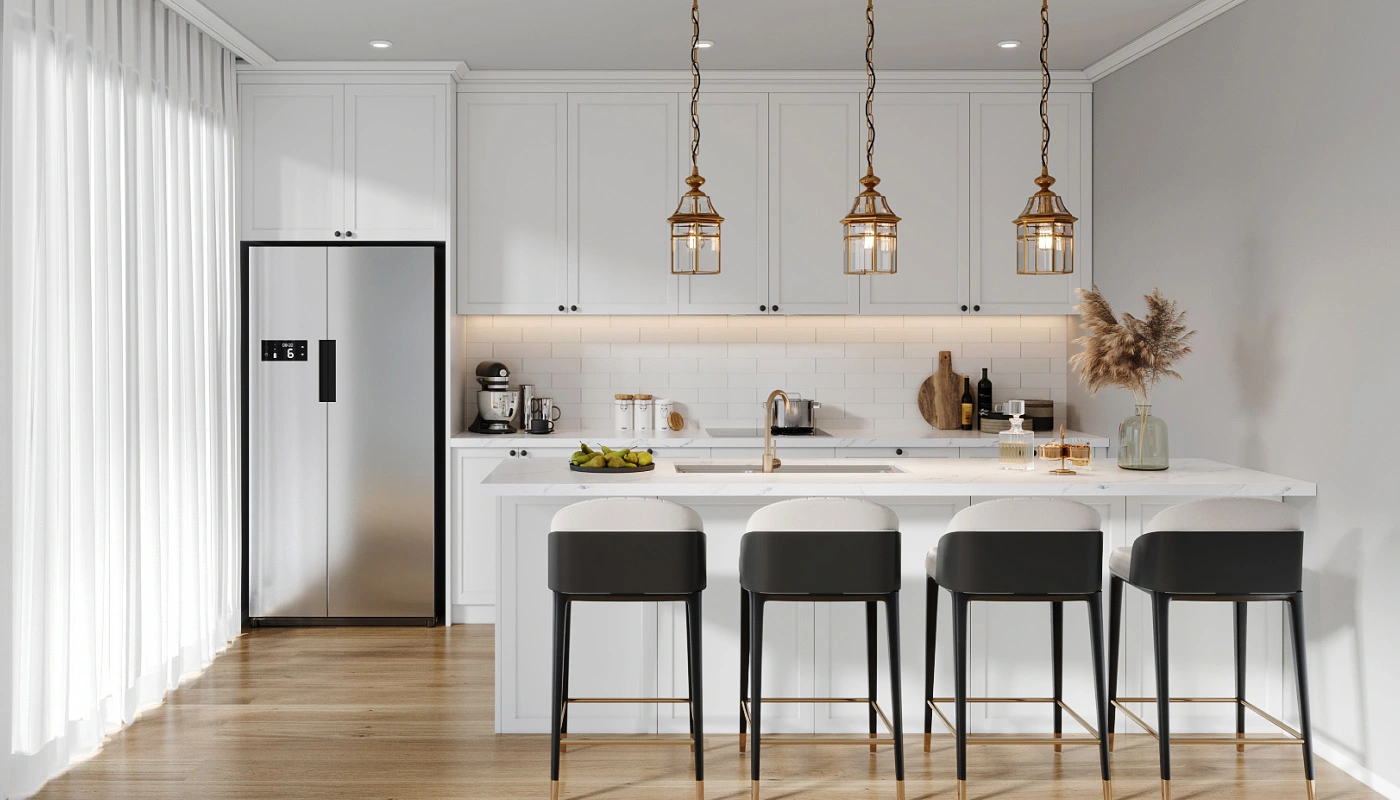
If we’d like to discuss your potential colour combinations, it would be helpful to get up to speed on the colour theory basics first. Then you can feel confident that your choices will be pleasing and imaginative.
The Color Wheel:
The color wheel is different hues’ relationships’ visual representation.
It has primary colours (red, blue and yellow); secondary colours (green, purple and orange) and tertiary colours (combinations of primary and secondary colours) as well.
The colour wheel can assist you in identifying complementary colours (ones that are opposite each other directly on the wheel) and analogous colours (ones directly adjacent to each other).
Color Schemes:
Monochromatic: This scheme uses light, dark, bright and deep variations of a single colour to create a harmonious effect.
Complementary: This is a combination of colours from opposite sides of the colour wheel, and as such this scheme is also known as high-contrast and can create vibrant effects.
Adjacent: This scheme relies on adjacent colours, giving a more subtle and harmonious palette.
Triadic: This scheme takes three colours from the colour wheel, evenly spaced from each other, which makes it a more balanced colour combination.
Color Psychology:
Colors can evoke some specific emotions and psychological responses.
Warm colours in the red, orange and yellow range evoke feelings of energy, passion and appetite, a perfect palette for the kitchen.
Cool (or calm?) colours such as blue, green and purple are known to be relaxing and refreshing, a good choice for cooking-space adornment.
Once you understand these tenets of colour theory, you’ll be able to create a harmonious and eye-catching colour palette for your modular kitchen.
Choosing the right color palette for your modular kitchen
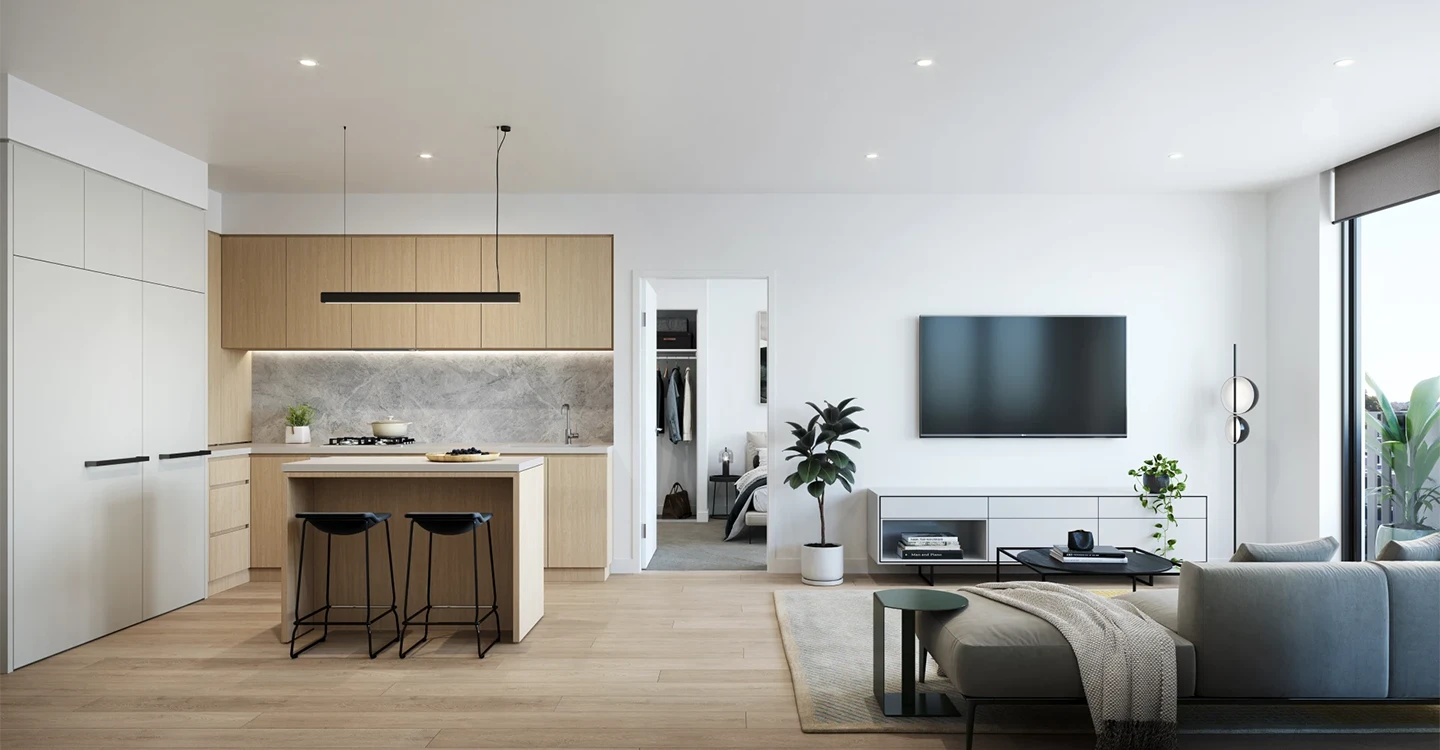
Picking a colour scheme for your modular kitchen is an important decision, as you want a palette that is not just pleasing to you, but also practical and modern. To make the process easier, here are some basic considerations to keep in mind:
Kitchen Size and Natural Light:
In smaller kitchens, light, bright colours can lend the room an aura of space and airiness.
Darker hues can make a large kitchen feel cozier and more intimate.
Think about how much natural light your kitchen gets, and what colours therefore work best to match these lighting conditions.
Style and Theme:
Decide on an overall style and theme for your kitchen – modern, rustic, traditional or eclectic.
Choose colors that align with and enhance your desired aesthetic.
Existing Elements:
Consider what you might already have on hand in your kitchen: flooring, countertops, or cabinetry, for example.
Select colors that complement these elements and create a cohesive visual flow.
Personal Preferences:
At the end of the day, it is important that your modular kitchen suits your style and taste.
Consider colors that make you feel happy, energized, and inspired while cooking and entertaining.
Then again, there are no hard-and-fast rules when it comes to choosing colours, the main thing being that it should be a balance between functionality, aesthetics and self-expression and always trying to create a modular kitchen that truly speaks to you.
Popular color combinations for modular kitchens
Although many personal preferences influence our choice of colour, we can still find some reliable colour schemes that are proven to be popular and visually delightful in modular kitchens. Below are some of them:
White and Wood Tones:
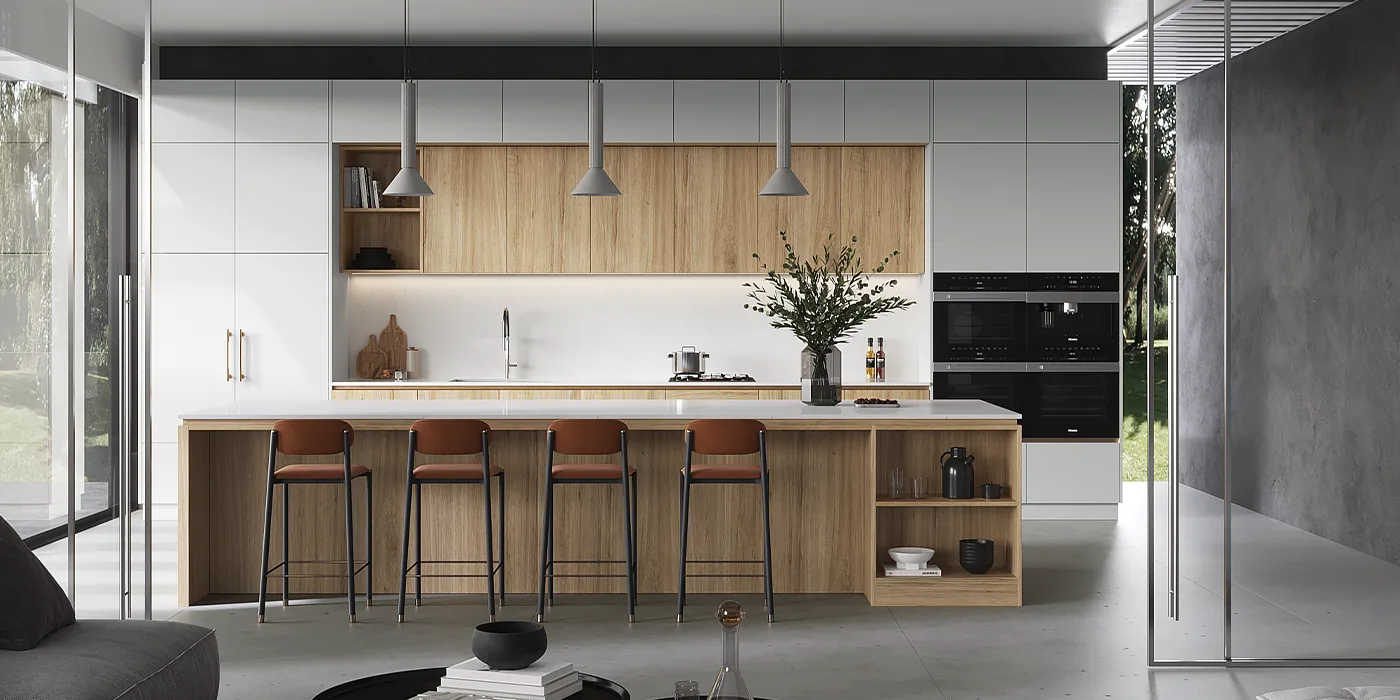
This classic combination exudes warmth, simplicity, and timeless elegance.
Opt for white cabinetry punctuated by dark wood tones for flooring, countertops or accents, for a spotless yet welcoming ambience.
Its versatility and easy interchangeability with pops of colour via accessories and backsplashes make it a hot commodity.
Gray and Blue:
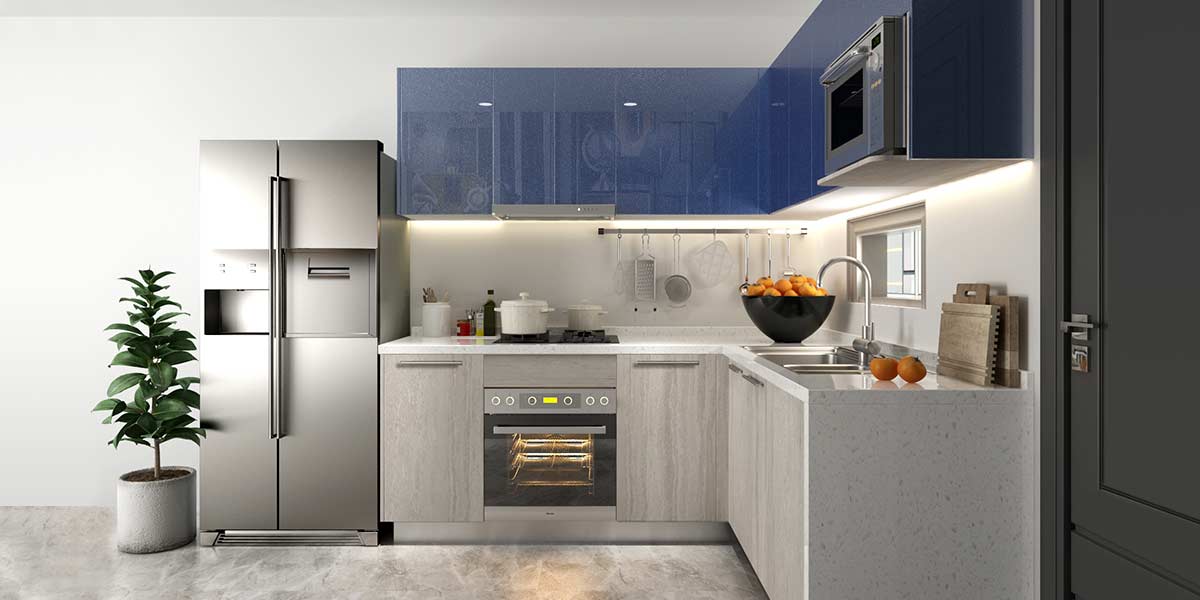
The combination of grey and blue is very quiet and elegant.
Soothing grey tones for casework or walls can be combined with any colourful blue shades for accents, backsplashes or accessories.
This palette suits for creating a calming and relaxing cooking environment.
Earthy Tones:
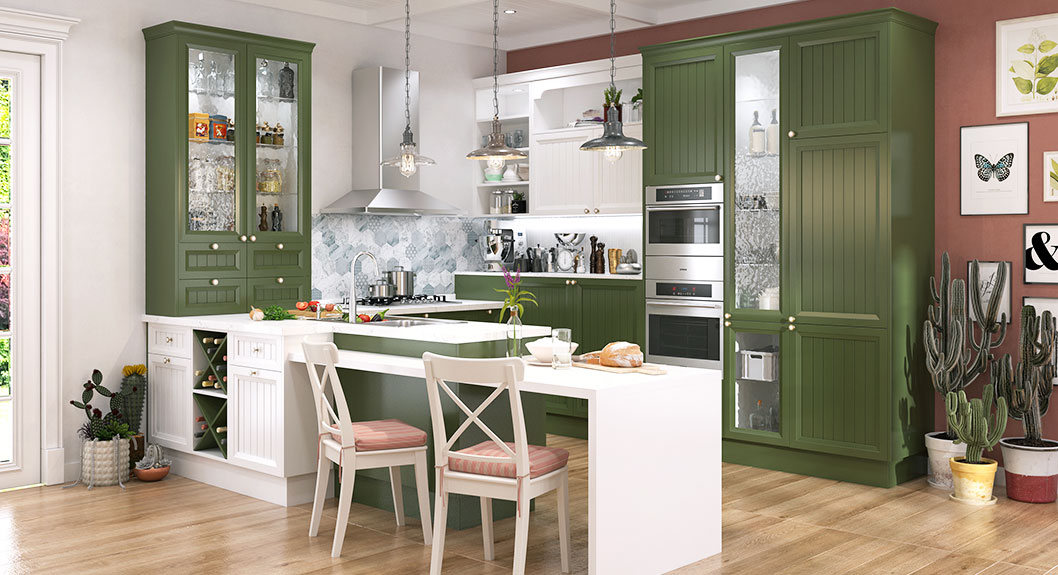
A palette based on earthy colours such as terracotta, olive green or warm brown makes the kitchen feel welcoming and comfy.
These are shades that can be used to colour cabinetry as well as walls and accents, and Latin American furniture can be enhanced with natural materials such as wood and stone.
It works well in a module that is rustic or organic.
Black and White:
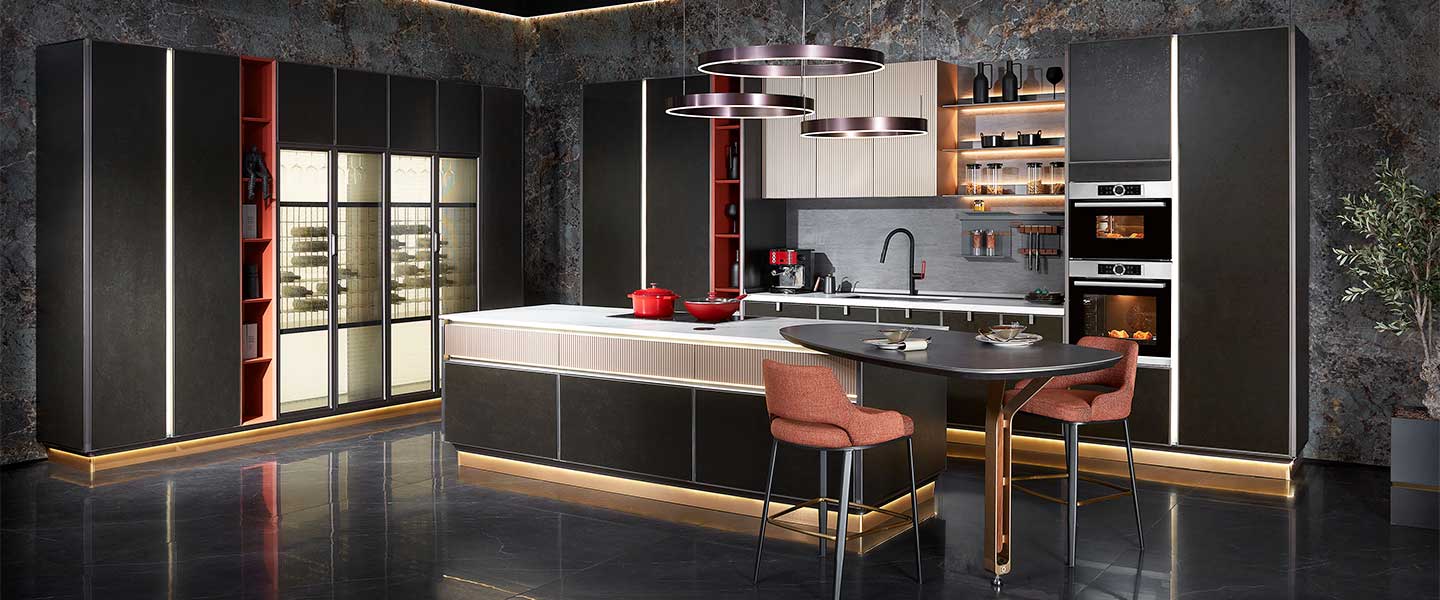
Black and white is a timeless, stylish pairing that suggests elegance, modernity.
Sleek black cabinetry paired with crisp white countertops and walls creates a striking contrast.
The palette is best kept soft with touches of soft (yet warm) wood or colour-pop accents added by way of accessories and backsplashes.
Jewel Tones:
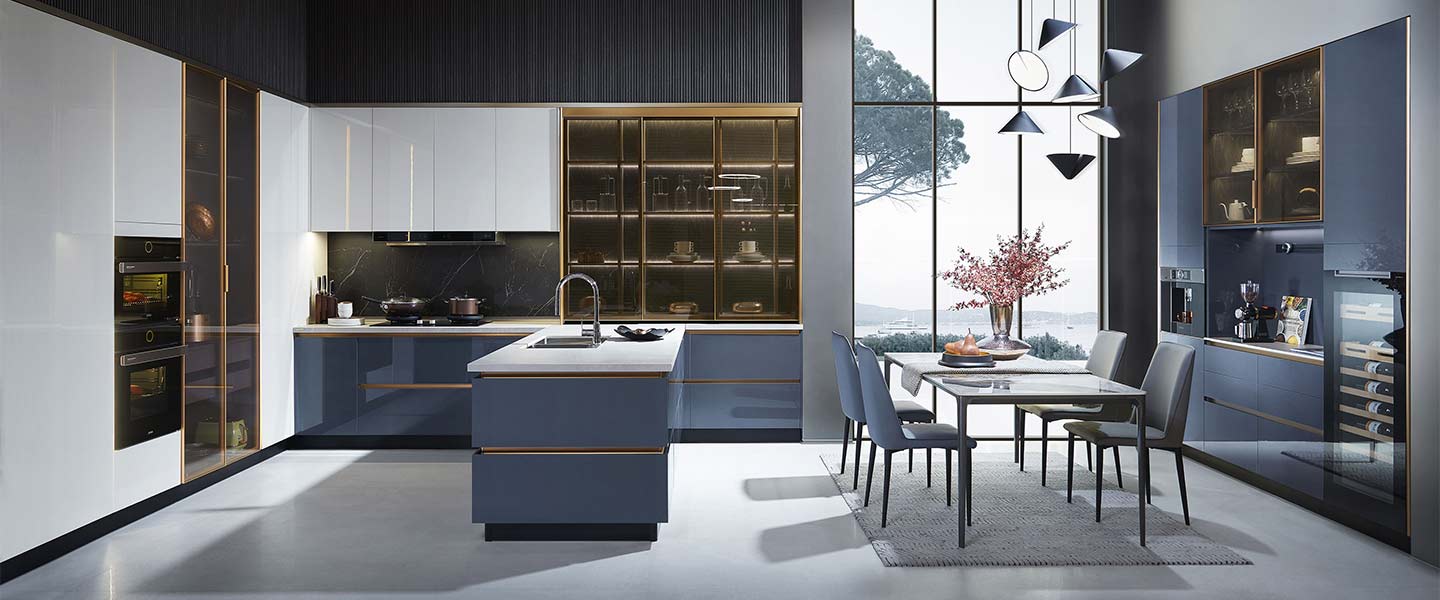
Those who crave bright, saturated hues will find jewel tones like sapphire blue, emerald green, and amethyst purple to be opulent and luxurious in result.
These hues can be used for cabinetry, backsplashes or accent walls: a bit of them goes a long way and should be tempered by calmer neutrals for a tamer status.
Do remember that the above are only a few of the trending colour combinations. The modular kitchen design is so versatile that it allows for a unique space that is a reflection of your personal style and individual choices.
Conclusion
Choosing colours for your modular kitchen is a fine balance between what you personally like, the scientific principles of colour theory, and the practical, functional thinking behind certain combinations. But by keeping these considerations at the back of your mind, your kitchen may yet be the culinary oasis you’ve longed for and deserve, one that is as beautiful as it is inspiring.
After all, colour is in the eyes of its beholder and if something looks good, then by all means it’s good – even if it doesn’t quite fit with the so-called trends. The beauty of modular kitchens is that they are a product of design that constantly adapts to your variable and ever-changing taste – whatever your style, follow your inner designer and trust yourself.